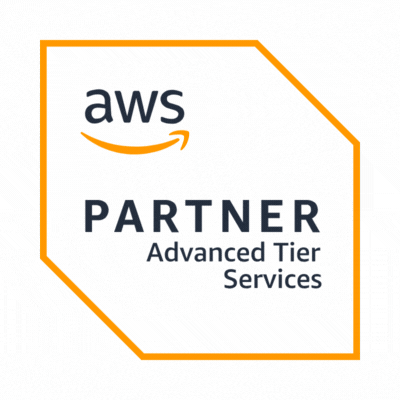In the digital era, content delivery networks (CDNs) play a crucial role in enhancing web performance and ensuring seamless user experiences. Amazon CloudFront, a leading CDN from Amazon Web Services (AWS), provides secure, scalable, and high-speed content delivery.
The global CDN market is expected to grow from USD 14.4 billion in 2020 to USD 27.9 billion by 2025, at a CAGR of 14.1%. This growth highlights the increasing reliance on CDNs like Amazon CloudFront to meet the demands of global digital content consumption.
How It Works and Why It Matters
Amazon CloudFront is a fast content delivery network that securely delivers data, videos, applications, and APIs to customers globally with low latency and high transfer speeds.
- Architecture: CloudFront uses a global network of edge locations and regional edge caches to deliver content to end-users with low latency. When a user requests content, CloudFront routes the request to the nearest edge location, ensuring quick delivery.
- Caching: CloudFront caches copies of your content at edge locations, reducing the load on your origin servers and speeding up content delivery to users.
- Use Cases: CloudFront is used for delivering static and dynamic web content, streaming video, distributing software, and APIs.
Amazon CloudFront’s architecture and caching capabilities ensure fast and reliable content delivery, enhancing user experiences and reducing server load.
Optimizing Web Performance with Amazon CloudFront
Web performance optimization is critical for improving user experience and search engine rankings.
- Caching Strategies: Implementing effective caching strategies in CloudFront, such as setting appropriate cache expiration times and using cache invalidation, can significantly improve web performance.
- Edge Locations: Utilizing CloudFront’s extensive network of edge locations ensures that content is delivered from the closest server to the user, reducing latency.
- Compression and Minification: Enabling gzip compression and minification of CSS, JavaScript, and HTML files reduces file sizes and improves load times.
By leveraging CloudFront’s caching strategies and edge locations, businesses can optimize web performance, resulting in faster load times and enhanced user satisfaction.
Implementing Secure Content Delivery with Amazon CloudFront
Security is a paramount concern for any content delivery service.
- SSL/TLS Encryption: Configuring SSL/TLS certificates in CloudFront ensures secure data transmission between users and servers.
- AWS WAF Integration: Integrating AWS Web Application Firewall (WAF) with CloudFront provides protection against common web exploits and attacks.
- Access Controls and Geo-Restriction: CloudFront allows you to set access controls and geo-restriction, limiting content delivery to specific geographic regions.
Implementing secure content delivery practices with CloudFront enhances data security and protects against potential threats, ensuring safe user interactions.
Leveraging Amazon CloudFront for Media Streaming
Media streaming requires reliable and efficient content delivery to ensure a smooth viewing experience.
- Live and On-Demand Streaming: CloudFront supports both live and on-demand video streaming, making it ideal for various media use cases.
- Integration with AWS Elemental Media Services: Integrating CloudFront with AWS Elemental Media Services provides a comprehensive solution for video processing and delivery.
- Optimization Tips: Techniques such as adaptive bitrate streaming and pre-caching can improve streaming performance and reduce buffering.
Leveraging CloudFront for media streaming ensures high-quality video delivery, enhancing viewer satisfaction and engagement.
CloudFront Edge Functions: Enhancing Content Delivery at the Edge
Edge computing enhances the performance and flexibility of content delivery.
CloudFront Functions and Lambda@Edge: These services allow you to run code closer to users, providing low-latency, high-performance customization of content delivery.
Use Cases: Use cases for edge functions include A/B testing, personalized content, and security enhancements.
Deployment: Step-by-step guide to deploying and managing edge functions with CloudFront.
CloudFront Edge Functions enable dynamic content customization and enhance performance, providing tailored experiences for users.
Using Amazon CloudFront for API Acceleration
APIs are critical for modern applications, and their performance can significantly impact user experience.
- API Gateway Integration: Integrating CloudFront with API Gateway accelerates API delivery and improves performance.
- Caching Strategies: Implementing caching strategies for API responses reduces latency and enhances API performance.
- Security: CloudFront provides security features such as DDoS protection and encryption to safeguard API endpoints.
Using CloudFront for API acceleration ensures fast, reliable, and secure API delivery, enhancing application performance.
Cost Management Strategies for Amazon CloudFront
Managing costs effectively is essential for maximizing the value of CloudFront.
- Understanding Pricing: Detailed explanation of CloudFront’s pricing model, including data transfer and request fees.
- Optimization Techniques: Tips for reducing costs, such as optimizing cache hit ratios and minimizing unnecessary data transfers.
- Monitoring Tools: Using AWS Cost Explorer and Budgets to track and manage CloudFront expenses.
Implementing cost management strategies helps businesses control expenses while leveraging CloudFront’s powerful features.
Integrating Amazon CloudFront with Other AWS Services
Integration with other AWS services enhances CloudFront’s capabilities and simplifies workflows.
- S3 and EC2: How to connect CloudFront with S3 for static content delivery and with EC2 for dynamic content.
- AWS Lambda: Using Lambda@Edge for custom processing of requests at edge locations.
- RDS and DynamoDB: Strategies for integrating CloudFront with RDS and DynamoDB for database-driven applications.
Seamless integration with other AWS services extends CloudFront’s functionality, providing a cohesive and efficient content delivery solution.
Troubleshooting Common Issues in Amazon CloudFront
Effective troubleshooting ensures optimal performance and reliability of CloudFront.
- Common Problems: Identifying and resolving issues such as cache misses, latency, and SSL/TLS errors.
- Diagnostic Tools: Using AWS CloudWatch, CloudFront logs, and other tools to diagnose and troubleshoot problems.
- Best Practices: Implementing best practices for maintenance and proactive issue resolution.
Troubleshooting common issues helps maintain a robust and high-performing CloudFront setup, ensuring consistent content delivery.
Improving SEO with Amazon CloudFront
SEO is crucial for driving organic traffic to websites, and performance plays a significant role in search rankings.
- Page Load Speed: How CloudFront’s caching and edge locations improve page load times, positively impacting SEO.
- Image Optimization: Using CloudFront for image optimization to enhance site performance and user experience.
- Mobile Performance: Ensuring fast and reliable content delivery for mobile users, improving mobile SEO rankings.
Implementing CloudFront can significantly improve website performance, leading to better SEO outcomes and increased organic traffic.
Scaling Global Applications with Amazon CloudFront
Global applications require scalable solutions to handle varying traffic loads and ensure high availability.
- Global Edge Network: Leveraging CloudFront’s global network of edge locations to handle traffic spikes and provide consistent performance.
- Load Balancing: Using CloudFront with Elastic Load Balancing to distribute traffic and ensure application availability.
- Auto Scaling: Integrating with AWS Auto Scaling to dynamically adjust resources based on demand.
Scaling global applications with CloudFront ensures high availability and optimal performance, regardless of traffic volumes.
Compliance and Data Privacy with Amazon CloudFront
Compliance with data privacy regulations is critical for businesses operating globally.
- GDPR and HIPAA Compliance: Configuring CloudFront to meet data privacy requirements and ensure regulatory compliance.
- Data Encryption: Implementing data encryption in transit and at rest to protect sensitive information.
- Access Controls: Using IAM and other AWS security features to manage access and ensure data privacy.
Ensuring compliance and data privacy with CloudFront safeguards sensitive information and helps businesses meet regulatory requirements.
Using Amazon CloudFront for E-commerce Platforms
E-commerce platforms require reliable and fast content delivery to enhance user experience and drive sales.
- Performance Optimization: Leveraging CloudFront to improve page load times and reduce cart abandonment rates.
- Security Features: Implementing SSL/TLS encryption and AWS WAF to protect customer data and transactions.
- Scalability: Using CloudFront to handle high traffic volumes during peak shopping periods, such as holidays and sales events.
Using CloudFront for e-commerce platforms ensures fast, secure, and scalable content delivery, enhancing customer satisfaction and boosting sales.
Monitoring and Analytics with Amazon CloudFront
Monitoring and analytics are essential for maintaining optimal performance and identifying areas for improvement.
- CloudFront Logs: Analyzing CloudFront logs to gain insights into traffic patterns and user behavior.
- AWS CloudWatch: Using CloudWatch to monitor CloudFront metrics and set up alerts for potential issues.
- Performance Metrics: Key metrics to track include cache hit ratios, latency, and error rates.
Monitoring and analytics tools help maintain a high-performing CloudFront setup, enabling proactive management and optimization.
Disaster Recovery and High Availability with Amazon CloudFront
Ensuring high availability and disaster recovery is crucial for maintaining continuous service and protecting data.
- High Availability Architecture: Designing an architecture that leverages CloudFront’s global edge network to ensure content availability even in the event of server failures. This includes using multiple origin servers and configuring failover mechanisms.
- Disaster Recovery Plan: Implementing a disaster recovery plan that includes automated backups and failover strategies to minimize downtime. CloudFront’s integration with AWS services like S3 and RDS supports efficient disaster recovery processes.
- Testing and Validation: Regularly testing disaster recovery plans and validating the configuration to ensure that they function as expected during actual incidents.
Implementing disaster recovery and high availability strategies with CloudFront ensures that your content remains accessible and resilient against failures, providing a reliable user experience.
The Takeaway
Amazon CloudFront is a versatile and powerful content delivery network that enhances web performance, security, and scalability. From integrating with various AWS services and optimizing costs to leveraging advanced features like edge functions and ensuring compliance, CloudFront offers comprehensive solutions for modern businesses.
Whether you are looking to improve SEO, enhance media streaming, or implement robust disaster recovery plans, CloudFront provides the tools necessary to meet your needs.
Ready to optimize your content delivery with Amazon CloudFront? Get in touch with our experts for a free consultation and take the first step towards faster, more secure, and reliable content delivery.




















